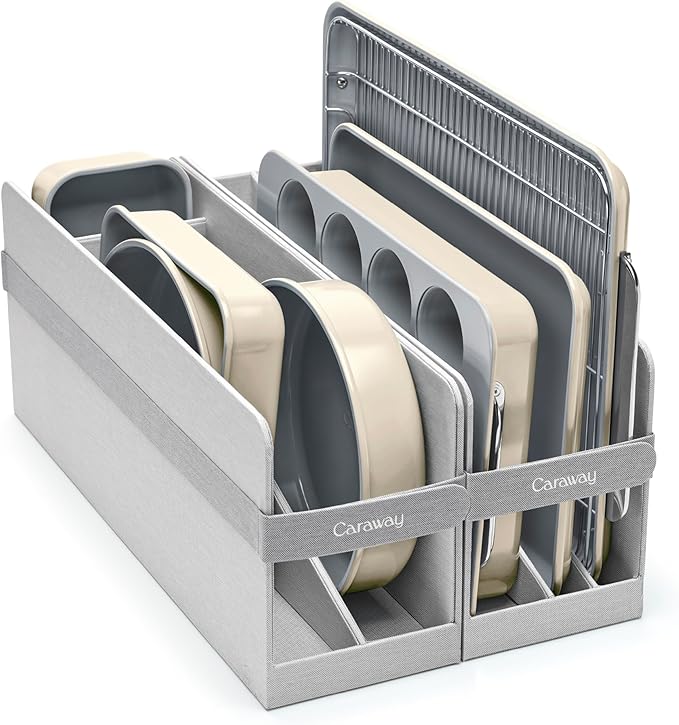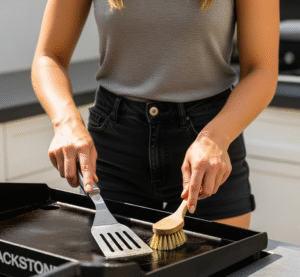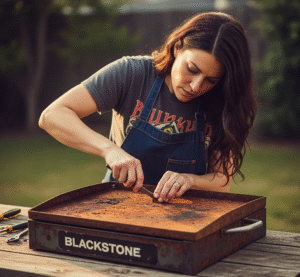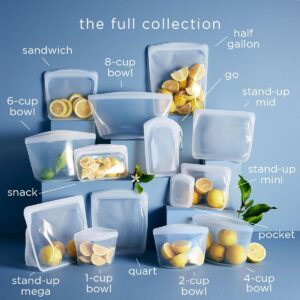I Thought I Was Baking Safely… Until I Learned This 😟
Is aluminum bakeware safe? That question haunted me one night after I pulled out a beautiful banana bread from my favorite silver-colored loaf pan. Everything looked perfect—until I started reading about aluminum on a health blog. “Aluminum can leach into food,” it said. “Linked to memory loss and even Alzheimer’s,” another claimed.
Suddenly, the golden crust didn’t feel so comforting anymore.
I panicked, honestly. I’ve been baking for years—cookies, cakes, muffins—you name it. And I’d always used aluminum bakeware. But I had no idea if it was actually safe. Sound familiar?
If you’re feeling confused (or just curious), you’re not alone. In this post, I’ll walk you through the real deal about aluminum bakeware, what you should avoid, and how to keep your baking both delicious and safe. 🍰
Table of Contents
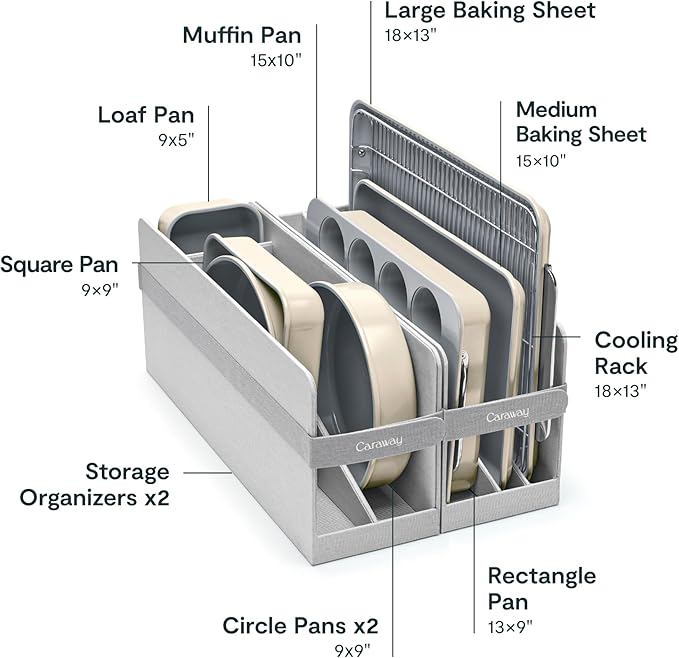
🥄 Is Aluminum Bakeware Safe? (The Honest Answer)
Let’s cut straight to the truth:
Yes, aluminum bakeware is generally safe — as long as you’re using the right kind and not misusing it.
The danger mainly comes from raw, uncoated aluminum reacting with acidic foods, which may cause small amounts of aluminum to leach into your food. This doesn’t usually happen with dry or low-acid items like cookies or cakes. But if you’re baking tomato tarts, lemon bars, or vinegar-based dishes in an uncoated aluminum pan? That’s where problems can arise.
🧪 What’s the Big Deal About Aluminum?
Aluminum is a metal that’s naturally found in soil, water, and even in our food. In small amounts, it’s not dangerous. The issue is when your cookware allows too much of it to seep into your meals, especially over time.
Here’s what’s important to know:
- The average person consumes 7–10 mg of aluminum daily, mostly through food and water
- According to the FDA and WHO, this is within safe limits
- But frequent exposure from cookware, especially uncoated aluminum, can increase that intake
Some studies suggest a possible link between high aluminum exposure and Alzheimer’s, though the connection is still debated. Still, I prefer to play it safe—especially since safer bakeware options exist today (and they’re not expensive either).
🛡️ Types of Aluminum Bakeware — Not All Are Created Equal
✅ 1. Anodized Aluminum – Super Safe
This is aluminum that’s been treated to create a hard, non-reactive surface. It won’t leach, even with acidic foods. I personally love my anodized baking sheet (grabbed this durable anodized cookie tray [Amazon link])—it heats evenly and cleans like a dream.
✅ 2. Nonstick-Coated Aluminum – Safe with Care
These pans have a protective nonstick layer on top of the aluminum. As long as the coating isn’t scratched, they’re very safe. I recommend this PFOA-free nonstick muffin tray [Amazon link]—it bakes evenly and pops out cupcakes effortlessly. Just don’t use metal utensils.
⚠️ 3. Raw, Uncoated Aluminum – Use with Caution
These are the silver pans you often find cheap at stores. They’re okay for dry, non-acidic baking like cookies, but don’t use them for anything acidic or you’ll risk metallic taste and aluminum leaching.
🍋 What Foods Should You Never Bake in Raw Aluminum?
Here’s a quick emotional truth:
I once baked a lemon pound cake in an old uncoated loaf pan, and it tasted like metal. I thought it was my recipe… but it was the pan.
Avoid using raw aluminum for:
- Tomato-based quiches
- Lemon bars
- Vinegar marinades
- Berry pies with lots of juice
These foods are acidic and can break down the metal, leading to leaching and weird flavors.
🍽️ Safe & Affordable Alternatives You Can Use Instead
If you’re nervous about your aluminum pans (like I was), don’t worry. You don’t need to toss your whole collection. But if you’re buying new ones, try one of these:
✅ 1. Anodized Aluminum Bakeware
Safe, strong, and long-lasting. I switched to this anodized loaf pan set and haven’t looked back.
✅ 2. Ceramic-Coated Bakeware
Non-toxic, nonstick, and safe for acidic foods. Just a bit heavier.
✅ 3. Glass Baking Dishes
Perfect for casseroles and brownies. No leaching, no coatings.
✅ 4. Silicone Bakeware
Great for muffins and cakes. Won’t react with food, though it doesn’t brown as well as metal.
Want a full list? Check out my post on Best Bakeware Sets for Home Bakers
🔥 Pro Tips for Safer Baking with Aluminum
Let me share what works for me:
- Always line pans with parchment paper for easy release and extra safety
- Never use metal spatulas on nonstick pans
- If your pan is scratched or warped, it’s time to let it go 😢
- Hand wash instead of dishwashing when possible to preserve the coating
🧁 So… Should You Stop Using Aluminum Bakeware?
Honestly? No. But you should be smart about it.
- If it’s anodized or nonstick-coated, you’re good.
- If it’s bare aluminum, just don’t use it with acidic foods.
- And if it’s scratched, old, or warping in the oven… treat yourself to an upgrade. Your health (and cupcakes!) are worth it.
❤️ Final Thoughts
Is aluminum bakeware safe? Yes—but only if you understand what you’re using and how to use it right.
I used to ignore bakeware quality. I thought if it looked clean, it was fine. But after learning more (and replacing a few pans), my baking not only tastes better—it feels better too.
So if you’re standing in your kitchen, holding that old silvery tray and wondering whether to keep or toss it… now you know. 💡
And hey—if you’re upgrading, check out this nonstick cake pan set that I absolutely adore. It’s affordable, safe, and totally worth it.
